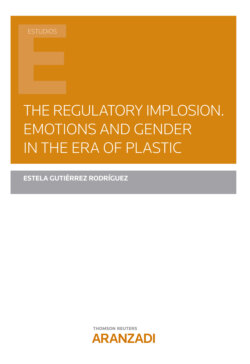Читать книгу The Regulatory Implosion. Emotions and Gender in the Era of plastic - Estela Gutiérrez Rodríguez - Страница 19
На сайте Литреса книга снята с продажи.
6.1.3. The Perfluoroalkylated substances (PFAS)
ОглавлениеChemical substances called Perfluoroalkylated (PFAS), have already been recognized by experts in endocrinology as obesogenic substances. These substances, used since the 1940s, have insulating thermal qualities, and also are water and oils proof54.
The United States environmental protection agency reports that they can be found, among others, in food packaging, household products such as pans, fabrics, waxes, paints, cleaning products and in fire fighting foam55.
These substances accumulate very easily in the gastrointestinal tract, pass into the bloodstream and, since they cannot be metabolized by the liver, they are eliminated through urine and feces56.
There are more than 3,000 organic chemicals belonging to the PFAS family. The most studied and present in the ecosystem are perfluorooctanoic acid (PFOA) and perfluorooctanoic sulfonate (PFOS)57.
Studies suggest that PFOS and PFOA contamination comes mainly from bioaccumulation in food chains, and due to the migration of particles of these substances to food during the production and packaging process.
Presence of these chemical substances lasts in living beings depending on the species; In rodents, the approximate presence is one month; in rabbits and monkeys from 3 to 4 months and in humans beings PFOS have an average duration of 5 years and PFOA 2 to 4 years.
From a total of 20,019 analytical food and beverage samples from 16 different European countries, including Spain, Norway and Germany, PFOS particles were found in fish, shellfish, meat and eggsmainly, and PFOA particles were found in dairy products, fish, and drinking water.
The study selected PFOA together with other 4 powerful hormonal disruptors (Bisphenol A, diethyl phthalate, benzo pyrene and chlorobiphenyl) to observe their reaction with three human endocrine system regulating receptors: an estrogen receptor, an androgen receptor and a thyroid hormone. Results show that PFOA present levels of endocrine disruption very similar to the other substances studied, and offer a higher level of thyroid receptor hormonal alteration. Thus has motivated endocrinologists to name them obesogenic substances.
In 2012 a study on the Danish population was published. The study analyzed 915 descendants growth and body weight at 20 years old, for a total of 665 mothers analyzed between 1988 and 1989 during their gestational week number 30 with the presence of PFOA in their bodies. It was demonstrated a direct relationship between overweight in female offspring and intrauterine exposure to PFOA58.
A study carried out in 2007 used two pans coated with polytetrafluoroethylene (PTFE), commonly referred to as Teflon, and two stainless steel pans in order to analyze the migration of PFOA to food during the cooking process with non-stick cooking pans coated with Teflon. After making different culinary preparations, results showed that during the use of the PTFE-coated pans, even though they are in perfect condition and without being damaged by use, at 250° there is a migration of PFOA from the utensil to the cooked food59.
